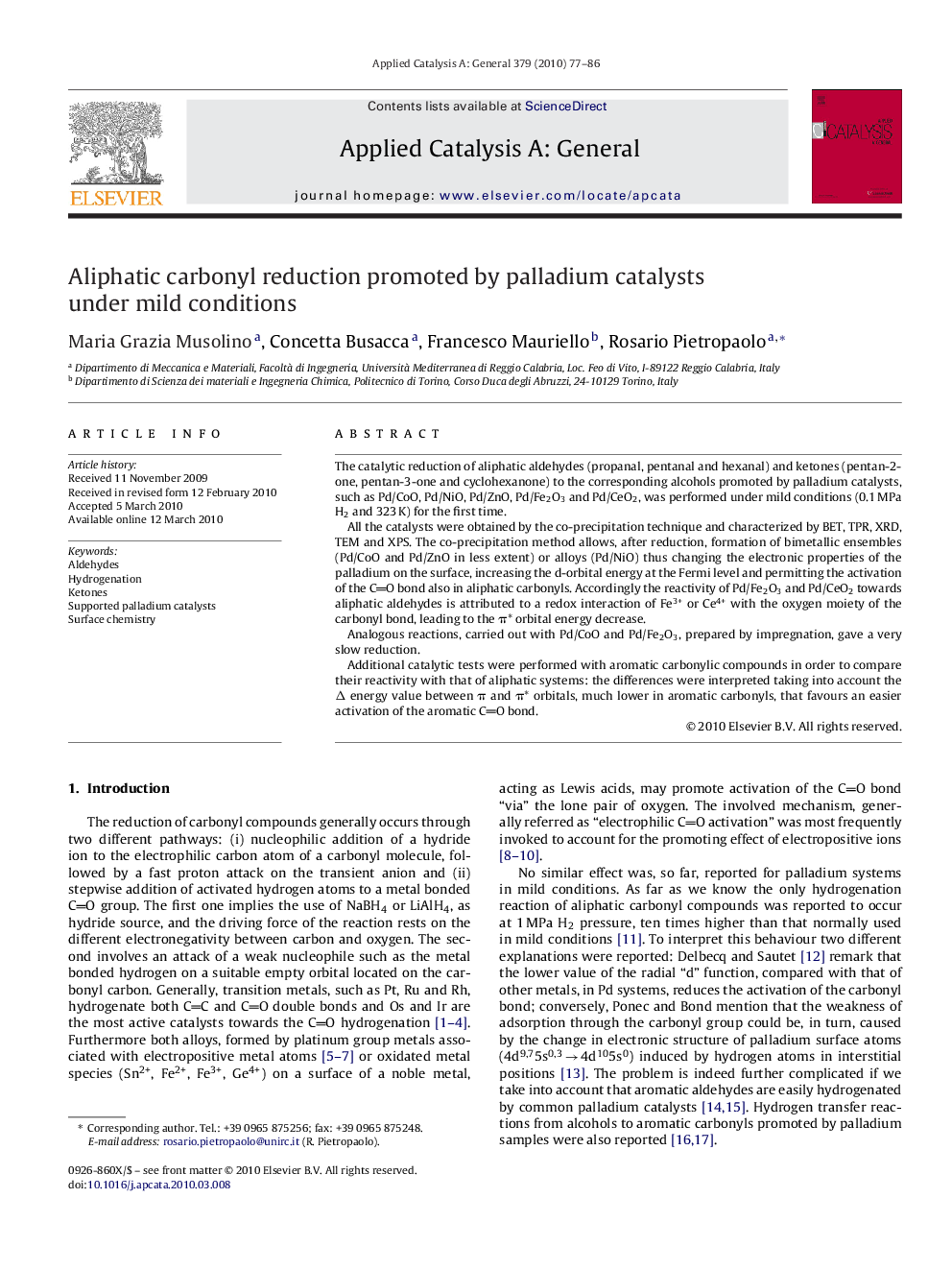| Article ID | Journal | Published Year | Pages | File Type |
|---|---|---|---|---|
| 42171 | Applied Catalysis A: General | 2010 | 10 Pages |
The catalytic reduction of aliphatic aldehydes (propanal, pentanal and hexanal) and ketones (pentan-2-one, pentan-3-one and cyclohexanone) to the corresponding alcohols promoted by palladium catalysts, such as Pd/CoO, Pd/NiO, Pd/ZnO, Pd/Fe2O3 and Pd/CeO2, was performed under mild conditions (0.1 MPa H2 and 323 K) for the first time.All the catalysts were obtained by the co-precipitation technique and characterized by BET, TPR, XRD, TEM and XPS. The co-precipitation method allows, after reduction, formation of bimetallic ensembles (Pd/CoO and Pd/ZnO in less extent) or alloys (Pd/NiO) thus changing the electronic properties of the palladium on the surface, increasing the d-orbital energy at the Fermi level and permitting the activation of the CO bond also in aliphatic carbonyls. Accordingly the reactivity of Pd/Fe2O3 and Pd/CeO2 towards aliphatic aldehydes is attributed to a redox interaction of Fe3+ or Ce4+ with the oxygen moiety of the carbonyl bond, leading to the π* orbital energy decrease.Analogous reactions, carried out with Pd/CoO and Pd/Fe2O3, prepared by impregnation, gave a very slow reduction.Additional catalytic tests were performed with aromatic carbonylic compounds in order to compare their reactivity with that of aliphatic systems: the differences were interpreted taking into account the Δ energy value between π and π* orbitals, much lower in aromatic carbonyls, that favours an easier activation of the aromatic CO bond.
Graphical abstractThe hydrogenation of aliphatic aldehydes and ketones promoted by supported palladium catalysts, prepared by co-precipitation, is performed under mild conditions (0.1 MPa H2 and 323 K) for the first time. Formation of bimetallic ensembles (Pd/CoO and Pd/ZnO in less extent) or alloys (Pd/NiO) changes the electronic properties of palladium on the surface, increasing the d-orbital energy at the Fermi level and allowing the activation of the CO bond. Accordingly the reactivity of Pd/Fe2O3 and Pd/CeO2 is attributed to a redox interaction of Fe3+ or Ce4+ with the oxygen moiety of the carbonyl bond.Figure optionsDownload full-size imageDownload high-quality image (90 K)Download as PowerPoint slide
